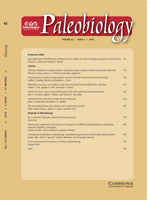Paleecological data allow not only the study of trends along deep-time chronological transects but can also be used to reconstruct ecological gradients through time, which can help identify causal factors that may be strongly correlated in modern ecosystems. We have applied such an analysis to Bergmann's rule, which posits a causal relationship between temperature and body size in mammals. Bergmann's rule predicts that latitudinal gradients should exist during any interval of time, with larger taxa toward the poles and smaller taxa toward the equator. It also predicts that the strength of these gradients should vary with time, becoming weaker during warmer periods and stronger during colder conditions. We tested these predictions by reconstructing body-mass trends within canid and equid genera at different intervals of the Oligo-Miocene along the West Coast of North America. To allow for comparisons with modern taxa, body mass was reconstructed along the same transect for modern Canis and Odocoileus.Of the 17 fossil genera analyzed, only two showed the expected positive relationship with latitude, nor was there consistent evidence for a relationship between paleotemperature and body mass. Likewise, the strength of body-size gradients does not change predictably with climate through time. The evidence for clear gradients is ambiguous even in the modern genera analyzed. These results suggest that, counter to Bergmann's rule, temperature alone is not a primary driver of body size and underscore the importance of regional-scale paleoecological analyses in identifying such drivers.
How to translate text using browser tools
3 May 2016
Latitudinal body-mass trends in Oligo-Miocene mammals
John D. Orcutt,
Samantha S. B. Hopkins
ACCESS THE FULL ARTICLE





